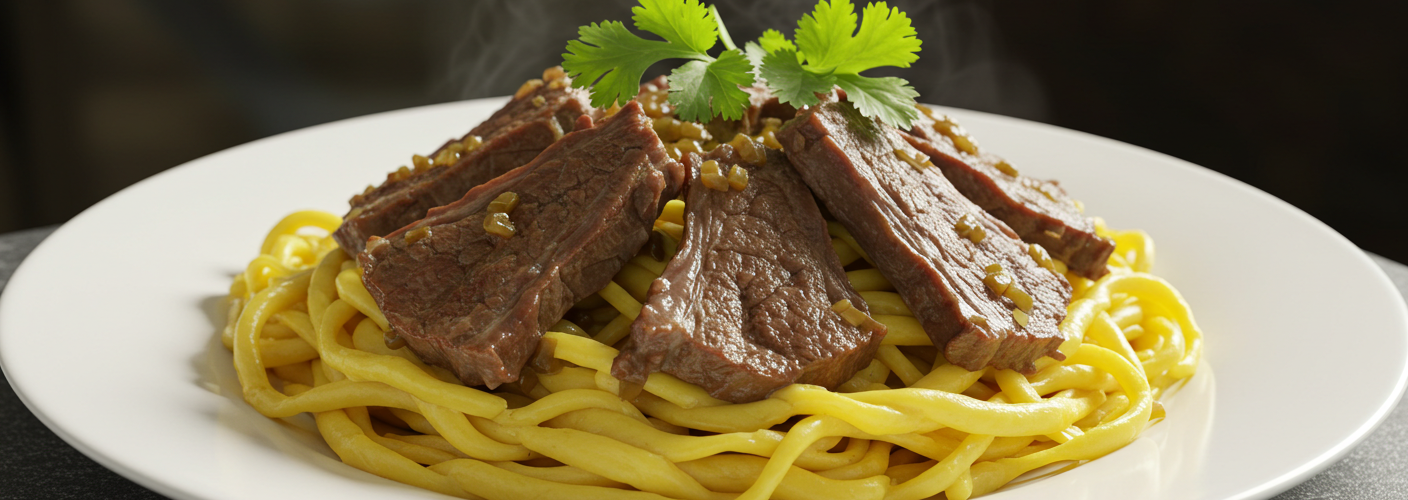Beshbarmak, a beloved dish from Kazakhstan, holds significant cultural and culinary importance in Central Asian cuisine. The name itself translates to “five fingers,” which signifies the traditional way of eating this hearty meal by hand. While it may originate from the nomadic lifestyles of the Kazakh people, it has transcended its humble beginnings and has become a cherished symbol of hospitality and family gatherings.
At the heart of Beshbarmak is its simple yet flavorful combination of boiled meat and noodles. The dish typically features lamb or beef, which is simmered to perfection until tender. The slow cooking process allows the natural flavors of the meat to shine through, creating a rich and comforting broth. This broth is often infused with unique spices and seasonings that reflect the region’s agricultural bounty, enhancing the overall taste profile of the dish.
The noodles in Beshbarmak are traditionally handmade, crafted from a simple mixture of flour, water, and salt. They are rolled out into thin sheets and then cut into squares or strips, which cook quickly in the flavorful broth. This noodles’ texture pairs beautifully with the tender meat, creating a satisfying meal that is as hearty as it is comforting.
Serving Beshbarmak is often a communal affair. A large platter is usually presented at the center of the table, allowing family and friends to gather around, share stories, and enjoy the meal together. This communal aspect of dining not only reflects the warmth of Kazakh hospitality but also creates an atmosphere of togetherness that enhances the enjoyment of the dish.
In addition to the savory meat and noodles, Beshbarmak is often accompanied by a refreshing side of onions, picked vegetables, or even a tangy sauce to balance the richness of the dish. Some variations incorporate additional ingredients, like saffron, which adds a distinctive flavor and color to the meal.
Beshbarmak is more than just food; it is a celebration of culture and tradition. It is served at special occasions, including weddings, family gatherings, and festivals, where it symbolizes abundance and hospitality. For many Kazakhs, sharing a plate of Beshbarmak represents an invitation of kinship, reinforcing bonds across generations.
What makes this dish even more unique is how it embodies the history and ethos of the Kazakh people. The nomadic lifestyle has greatly influenced the way Beshbarmak is prepared and enjoyed. Originally, these meals were cooked over open fires, often while on the move. Today, it retains those deep-rooted traditions while being celebrated in modern dining settings, keeping the spirit of Beshbarmak alive.
For anyone curious to explore new cuisines or looking to connect with the rich heritage of Kazakhstan, trying Beshbarmak is a delightful starting point. Its simplicity and heartiness evoke feelings of comfort and joy that are universal, making it an extraordinary dish to share not only within Kazakhstan but also on dinner tables around the world.
In conclusion, Beshbarmak is more than just a meal; it is a cultural experience that invites you to slow down, gather together, and savor the flavors of a rich culinary heritage. Whether you are enjoying it as part of a festive celebration or as a casual family dinner, Beshbarmak is sure to leave a lasting impression.




Add comment